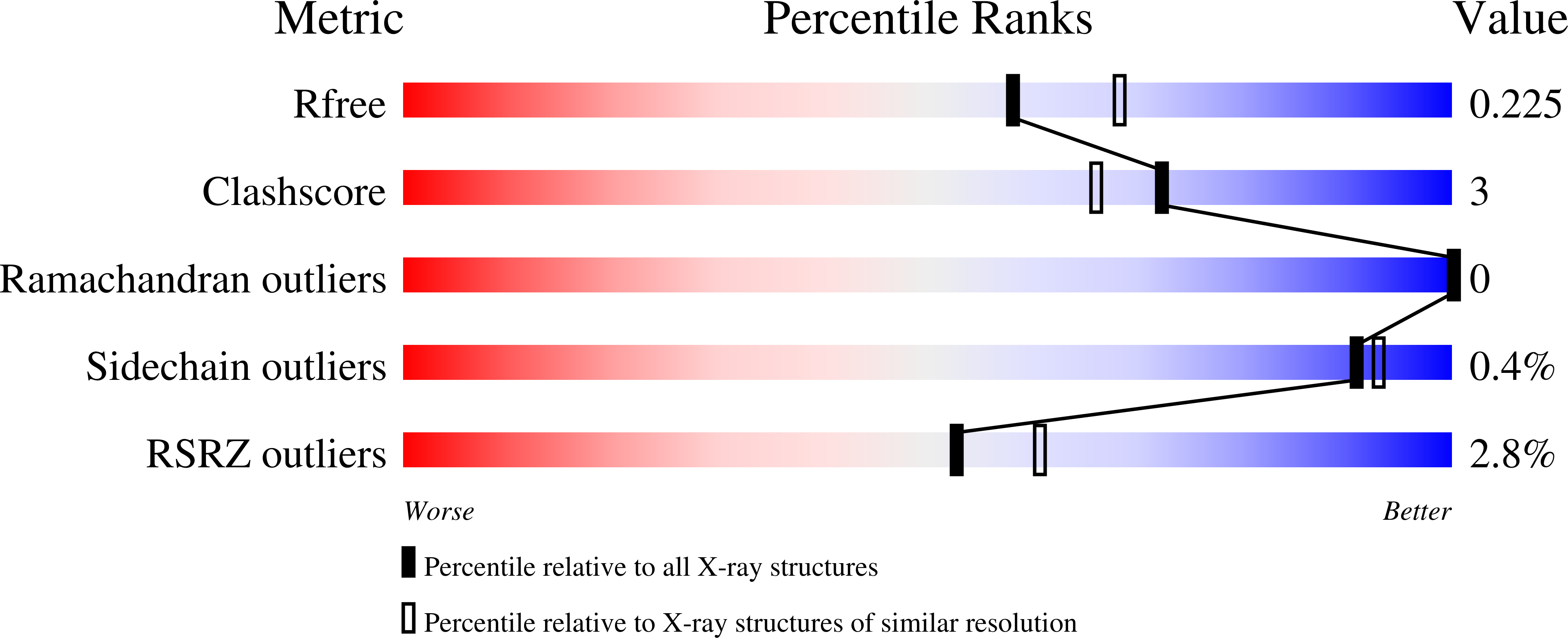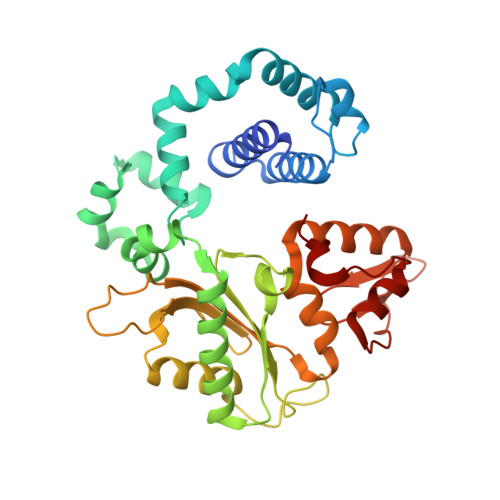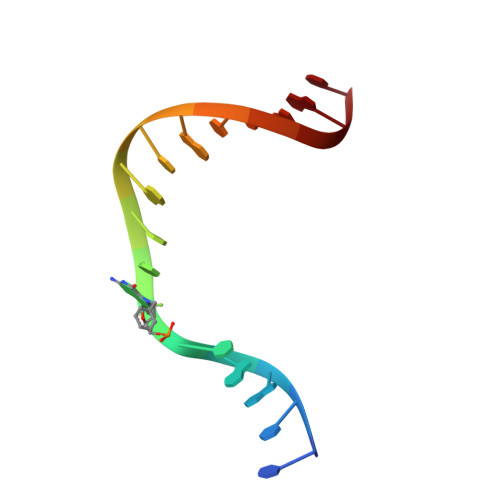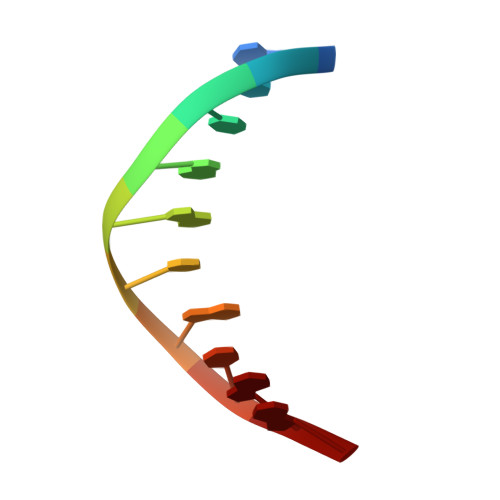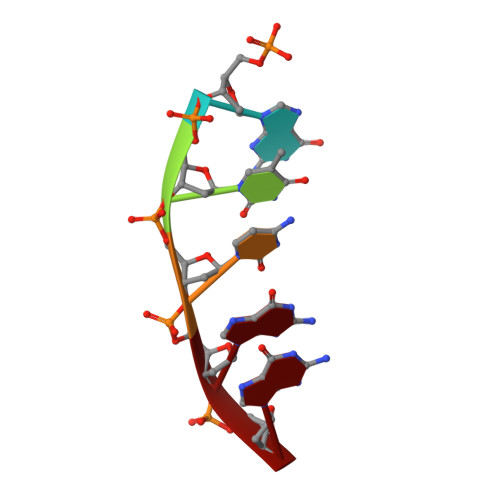Structural and kinetic studies of the effect of guanine-N7 alkylation and metal cofactors on DNA replication.
Kou, Y., Koag, M.C., Lee, S.(2018) Biochemistry
- PubMed: 29957995
- DOI: https://doi.org/10.1021/acs.biochem.8b00331
- Primary Citation of Related Structures:
4YMN, 4YMO, 4YN4, 5EOZ - PubMed Abstract:
A wide variety of endogenous and exogenous alkylating agents attack DNA to preferentially generate N7-alkylguanine (N7-alkylG) adducts. Studies of the effect of N7-alkylG lesions on biological processes have been difficult in part because of complications arising from the chemical lability of the positively charged N7-alkylG, which can readily produce secondary lesions. To assess the effect of bulky N7-alkylG on DNA replication, we prepared chemically stable N7-benzylguanine (N7bnG)-containing DNA and evaluated nucleotide incorporation opposite the lesion by human DNA polymerase ¦Â (pol¦Â), a model enzyme for high-fidelity DNA polymerases. Kinetic studies showed that the N7-benzyl-G lesion greatly inhibited dCTP incorporation by pol¦Â. The crystal structure of pol¦Â incorporating dCTP opposite N7bnG showed a Watson-Crick N7bnG:dCTP structure. The pol¦Â-N7bnG:dCTP structure showed an open protein conformation, a relatively disordered dCTP, and a lack of catalytic metal, which explained the inefficient nucleotide incorporation opposite N7bnG. This indicates that pol¦Â is sensitive to major groove adducts in the templating base side and deters nucleotide incorporation opposite bulky N7-alkylG adducts by adopting a catalytically incompetent conformation. Substituting Mg 2+ for Mn 2+ induced an open-to-closed conformational change due to the presence of catalytic metal and stably bound dCTP and increased the catalytic efficiency by ¡«10-fold, highlighting the effect of binding of the incoming nucleotide and catalytic metal on protein conformation and nucleotidyl transfer reaction. Overall, these results suggest that, although bulky alkyl groups at guanine-N7 may not alter base pairing properties of guanine, the major groove-positioned lesions in the template could impede nucleotidyl transfer by some DNA polymerases.
Organizational Affiliation:
Division of Chemical Biology and Medicinal Chemistry, College of Pharmacy , The University of Texas at Austin , Austin , Texas 78712 , United States.







